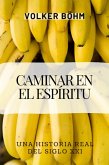
8,49 €
inkl. MwSt. und vom Verlag festgesetzt.
Sofort per Download lieferbar

5,49 €
inkl. MwSt. und vom Verlag festgesetzt.
Sofort per Download lieferbar
8,49 €
inkl. MwSt. und vom Verlag festgesetzt.
Sofort per Download lieferbar
8,49 €
inkl. MwSt. und vom Verlag festgesetzt.
Sofort per Download lieferbar
9,49 €
inkl. MwSt. und vom Verlag festgesetzt.
Sofort per Download lieferbar
8,49 €
inkl. MwSt. und vom Verlag festgesetzt.
Sofort per Download lieferbar
8,49 €
inkl. MwSt. und vom Verlag festgesetzt.
Sofort per Download lieferbar
8,49 €
inkl. MwSt. und vom Verlag festgesetzt.
Sofort per Download lieferbar
Broschiertes Buch
Softcover reprint of the original 1st ed. 2017
24. Mai 2018
Springer / Springer International Publishing / Springer, Berlin
978-3-319-86790-8
| Gebundenes Buch | 70,99 € | |
| eBook, PDF | 53,95 € |
Gebundenes Buch
1st ed. 2017
13. November 2017
Springer / Springer International Publishing / Springer, Berlin
978-3-319-60148-9
Ähnlichkeitssuche: Fact®Finder von OMIKRON
